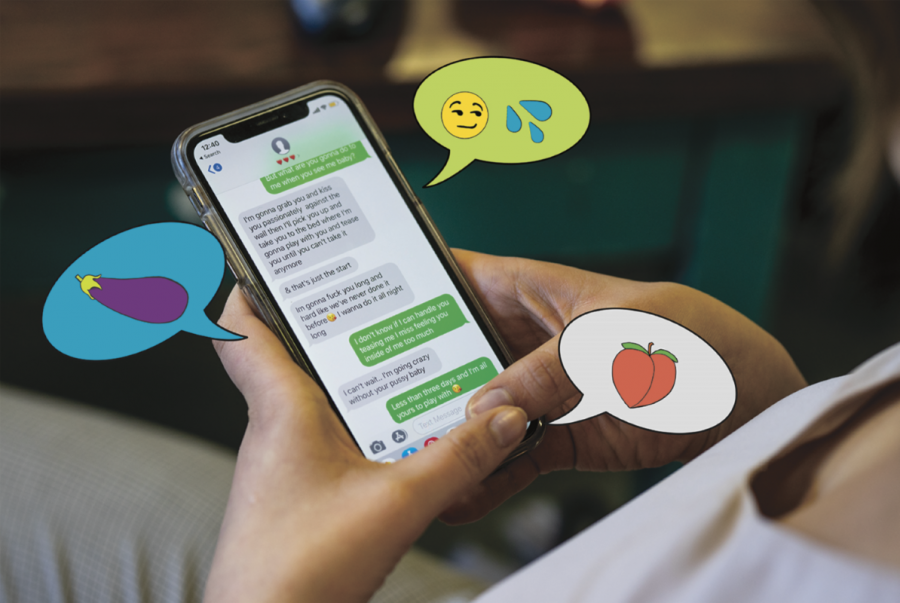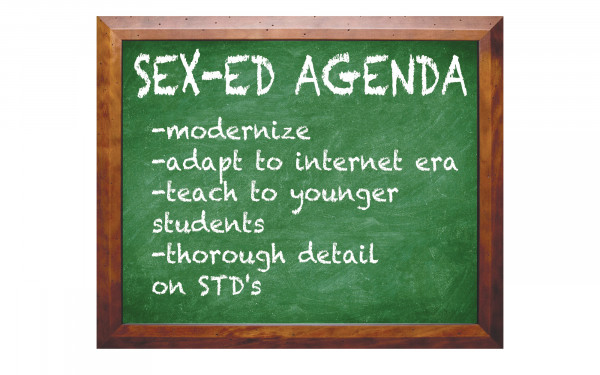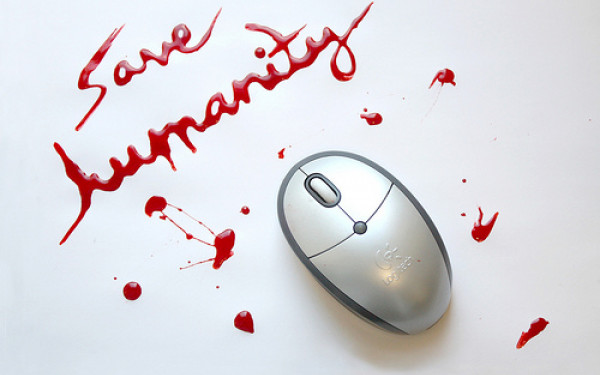A Brief, Dirty History of Sexting
Nudes and Racy Messaging Aren’t a Product of the Twenty-First Century!
Despite the crescendo of moral panic in the media surrounding sexting, the practice of racy messaging is much older than the clickbait will lead you to believe.
The desire to communicate erotically is an innate drive for most people, so it’s no wonder we’ve been sexting in one way or another since the invention of the written word. Sexual communication has been constant over time; the only thing that has changed are the technologies we have at our disposal to share those thoughts.
Dr. Stefanie Duguay, professor in communication studies at Concordia University, explained that sexting has become a hot button issue recently because new mediums have made it more prevalent than in the past.
“When we look at the internet and digital media, key affordances of the internet are that a lot of the data on it is rapidly searchable,” she said. “It’s scalable, you can share with people, you can replicate things, and copy and paste.”
“It is this sort of more personal media that you can use on your own; you can use it individually. You can send things very easily. So, I think the reason people are talking about sexting is that now it is very common for people to exchange nudes.”
The earliest direct ancestor of the modern sext is the love letter. Though historians argue about the oldest example, one possibility, dated around 2000 B.C., is a Sumarian love poem dedicated to King Shu-Sin. Thanks to the rise of the printing press in the 1400s making the written word more accessible, love poems later evolved into private correspondences between partners. Now archives of love letters are everywhere online. Look up any major historical figure and there’s a good chance you could find letters written by them admiring their betrothed.
While we might imagine love letter to be highly romantic and about pining for a lover far away, some of these letters were just as obscene and depraved as your average creepy Tinder message. Consider James Joyce’s letters to Nora Barnacle. Written by a 22-year-old Joyce after an encounter with Barnacle, they can only be described as an early 1900s “dick appointment.” He became infatuated with Nora after their date, and now we have artifacts of the author calling her “my dirty little fuckbird” and “my sweet little whorish Nora,” along with much too specific depictions of what Joyce would like to do with her when they see each other next. Joyce’s letters show that 100 years on, guys in their twenties are still just as creepy.
Not all sexts from the past were written sending nude images also has its own saucy history. King Charles II of England liked commissioning nude paintings of his long-time mistress, Nell Gwyn. These portraits often depicted Gwyn topless, reclining on a bed, or performing suggestive acts like stuffing sausages. These privately commissioned paintings were not too different from a sneaky Instagram direct message. Before the invention of the camera, painting was the medium for displaying and sharing images of yourself—or your lover.
The main difference between sending “nudes” then and now is not the format really, it’s that you needed a paid artist as a mediator unless you were an artist yourself. That meant less anonymity and secrecy between partners, since a third person was aware of the exchange . When this practice later shifted to photography, the technology was different but the content was still mediated by a person handling a camera.
That all changed with the invention of the Polaroid camera. Now the photographer no longer had to worry about a photo developer snooping on their photos. The pictures developed on their own.
The technology of the Polaroid provided unparalleled intimacy—and that secrecy ultimately led to its sexual use. From Polaroid’s heyday in the 1960s, through the 80s and until the adoption of camera phones, instant cameras were widely used to take intimate photos.
Because of their physical, analog qualities, Polaroids were an ideal medium for sexting. They were discrete, almost immediate, but most importantly they couldn’t be easily copied and forwarded the way digitals can today. Polaroid nudes jump started a shift from nudes being an artistic venture (not that this has disappeared) into something any horny person can create at home with minimal resources.
“People have been making images of sex for as long as people have been drawing pictures of any kind, but our ability to do so now both with ease and in what we may think of as privacy has definitely changed how those images and representations intersect with both how people have sex and how they think about it.” — Shannon McSheffrey
Yet, physical sexting mediums weren’t without their sinister possibilities. Dr. Shannon McSheffrey, a professor in Concordia’s history department, explained that even back then intimate photos could be used to harm. “Before the advent of the internet, such photos could sometimes be used as “revenge porn” (or, as the scholars call it, “non-consensual intimate image sharing”) when a relationship broke down.”
McSheffrey explains, “There are cases, for instance, where a jilted lover would put copies of such images into the mailboxes of neighbours in order to humiliate them, but the much broader and instantaneous sharing that is now possible was not technically feasible.”
That brings our historical journey of sensual technology to the twenty-first century with arguably the most powerful mechanism in the evolution of sexting: the smartphone. These devices have made pretty much every communication process easier through their mobility. At our fingertips, we have all the sexting technologies that our ancestors used in more labourious ways. Though the practice of sexting has been going on basically forever, since it is so much easier now that we have the internet in our pockets, we may be in a sort of renaissance of sexting.
“People have been making images of sex for as long as people have been drawing pictures of any kind, but our ability to do so now both with ease and in what we may think of as privacy has definitely changed how those images and representations intersect with both how people have sex and how they think about it,” McSheffrey said.
Along with our ability to send messages with an ease unimaginable until very recently, apps like Snapchat promise to leave no trace of images you don’t want sticking around. Never before have we been able to send photos that have a shelf life of only a few seconds before disappearing.
Duguay explained why Snapchat is attractive for sexting.
“In terms of the ephemerality, you can send a picture without feeling necessarily like it’s going to follow you. This is really important because there are real risks of revenge porn or an image surfacing later when, for example, the Apple iCloud got hacked into and we had that whole crisis about celebrity nudes,” she said. “These are real risks. If you have an image and it disappears, then you might be mitigating some of those risks.”
The future of sexting is as bright as our phone screens. The tech industry never stops innovating, and despite the numerous issues with Silicon Valley, new advances in communication technology will likely to lead to new kinds of sexting habits. It’s hard to say where sexting will go from here, but is likely to include emerging technologies such as virtual reality. VR porn already exists, so it won’t be long until people can manufacture their own videos for VR headsets without the need for a professional porn studio.
New technologies may encourage us to be more open about seemingly every aspect of our lives, but sex often remains a taboo topic. Despite the fact that forms of sexting have existed for millennia, we like to pretend that it’s a new phenomenon. That people have always communicated about pleasure doesn’t really mesh well with the moral panic surrounding sexting that’s circulating through the media nowadays.
Duguay elaborates, “‘We get so worried when young people want to have sexual citizenship. There’s always a panic about teens having sex, and [whether] they’re going to do it responsibly. Of course there are different value systems that have different beliefs about when people should be having or not be having sex. So the technology gets mixed up in all these different debates that already exist.”
How we communicate will always evolve and so will how we sext. But at least now you don’t need to be a prolific writer or king to send those dirty messages.


_600_832_s.png)



__600_375_90_s_c1.jpg)